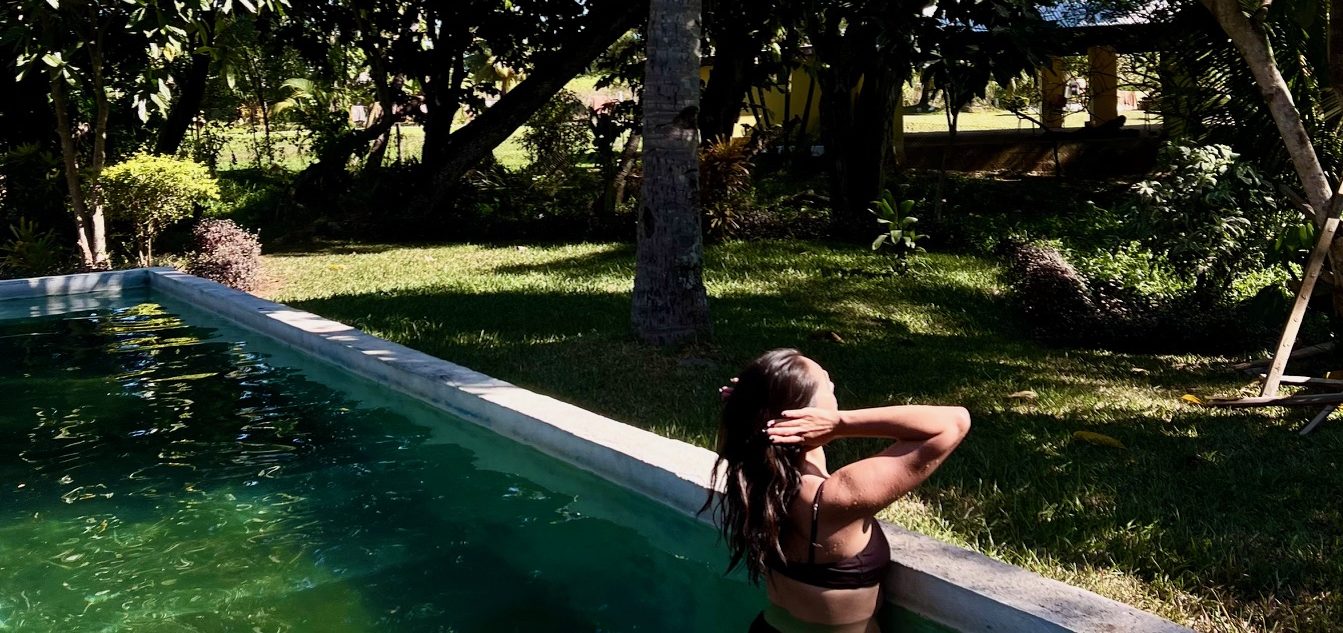Hunters Hill Heritage Transformed for Modern Day Living
A heritage-listed Federation estate with tennis court, pool and studio, Marika offers timeless elegance and modern family living in the heart of Hunters Hill.
A grand old dame who has stood the test of time, Marika is a slice of Hunters Hill heritage transformed for modern-day living.
Meticulously renovated between 1981 and 1983, with several updates since, Marika made it onto the heritage register in 1999 just in time to signal a new millennium. Today, the modernised mansion is on the market with an auction price guide of $7.5 million, marketed through BresicWhitney’s Nicholas McEvoy.
“The home is a fantastic opportunity for a discerning buyer to get a grand family estate-style property, with a pool, tennis court and grounds, for a price that’s much more affordable than expected,” McEvoy says.
Sitting pretty on the corner of Augustine St and Ryde Rd, the stately Federation residence occupies a sprawling 2472sq m block, which was once part of a 30-acre land grant handed to Frederick Augustus Hayne in 1835. In 1902, he sold it to Dr Leopold Augustus Carter, a local dentist. Two years later, Marika, then known as “Ryde”, appeared in the famed Sands Directory – the social media of its era – a symbol of its architectural significance.
Surrounded by manicured gardens with sculpted hedges, a pool and full tennis court, Marika is a prime example of Federation style with contemporary elements.
Inside, the single-level five-bedroom home showcases intricate craftsmanship, from its decorative gables, period archways and bay windows to the coloured glass panels on multiple doors and windows. Elegant formal rooms have high ornate ceilings that are a preserved nod to Marika’s past, while the more modern spaces are relaxed family-friendly zones.
Thanks to a pavilion-style addition, the L-shaped layout measures 450sq m internally and wraps around a central courtyard that plays host to the alfresco dining terrace and pool, while a wide veranda frames the original front rooms of the house.
Primary living spaces, including the dining area with integrated bar, open to the great outdoors via stacker doors and the 21st century kitchen has a large island bench and a butler’s pantry with hidden access to the triple lock up garage. There is also a dedicated media room, a library or home office, plus a separate family room with a beautiful bay window.
All bedrooms feature built-ins while the main retreat, and a second bedroom, have shower ensuites. The shared bathroom houses convenient twin vanities and a freestanding bathtub.
Beyond the interiors, Marika delivers resort amenities with a full-sized, floodlit tennis court, the pool, barbecue terrace and a self-contained studio apartment with the added bonus of Harbour Bridge glimpses.
Added extras include a converted loft storage space, a large laundry with side yard access, ducted air conditioning, multiple fireplaces, solar panels with a battery backup and modern insulation.
Accessed via Augustine St, Marika is close to St Joseph’s College, Boronia Park shops, local ovals and city transport.
Marika at 59 Augustine St, Hunters Hill is set to go under the hammer on April 26, on site at 9am with a price guide of $7.5 million. The listing is with Nicholas McEvoy and Narelle Scott of BresicWhitney Hunters Hill.
Records keep falling in 2025 as harbourfront, beachfront and blue-chip estates crowd the top of the market.
A divide has opened in the tech job market between those with artificial-intelligence skills and everyone else.
The 2026 McGrath Report warns that without urgent reforms to planning, infrastructure and construction, housing affordability will continue to slip beyond reach for most Australians.
Australia’s housing market has reached a critical juncture, with home ownership and rental affordability deteriorating to their worst levels in decades, according to the McGrath Report 2026.
The annual analysis from real estate entrepreneur John McGrath paints a sobering picture of a nation where even the “lucky country” has run out of luck — or at least, out of homes.
New borrowers are now spending half their household income servicing loans, while renters are devoting one-third of their earnings to rent.
The time needed to save a 20 per cent deposit has stretched beyond ten years, and the home price-to-income ratio has climbed to eight times. “These aren’t just statistics,” McGrath writes. “They represent real people and real pain.”
McGrath argues that the root cause of Australia’s housing crisis is not a shortage of land, but a shortage of accessibility and deliverable stock.
“Over half our population has squeezed into just three cities, creating price pressure and rising density in Sydney, Melbourne and Brisbane while vast developable land sits disconnected from essential infrastructure,” he says.
The report identifies three faltering pillars — supply, affordability and construction viability — as the drivers of instability in the current market.
Developers across the country, McGrath notes, are “unable to make the numbers work” due to labour shortages and soaring construction costs.
In many trades, shortages have doubled or tripled, and build costs have surged by more than 30 per cent, stalling thousands of projects.
Need for systemic reform
McGrath’s prescription is clear: the only real solution lies in increasing supply through systemic reform. “We need to streamline development processes, reduce approval timeframes and provide better infrastructure to free up the options and provide more choice for everyone on where they live,” he says.
The 2026 edition of the report also points to promising trends in policy and innovation. Across several states, governments are prioritising higher-density development near transport hubs and repurposing government-owned land with existing infrastructure.
Build-to-rent models are expanding, and planning reforms are gaining traction. McGrath notes that while these steps are encouraging, they must be accelerated and supported by new construction methods if Australia is to meet demand.
One of the report’s key opportunities lies in prefabrication and modular design. “Prefabricated homes can be completed in 10–12 weeks compared to 18 months for a traditional house, saving time and money for everyone involved,” McGrath says.
The report suggests that modular and 3D-printed housing could play a significant role in addressing shortages while setting a new global benchmark for speed, cost and quality in residential construction.
Intelligent homes
In a section titled Weathering the Future: The Power of Smart Design, the report emphasises that sustainable and intelligent home design is no longer aspirational but essential.
It highlights new technologies that reduce energy use, improve thermal efficiency, and make homes more resilient to climate risks.
“There’s no reason why Australia shouldn’t be a world leader in innovative design and construction — and many reasons why we should be,” McGrath writes.
Despite the challenges, the tone of the 2026 McGrath Report is one of cautious optimism. Demand is expected to stabilise at around 175,000 households per year from 2026, and construction cost growth is finally slowing. Governments are also showing a greater willingness to reform outdated planning frameworks.
McGrath concludes that the path forward requires bold decisions and collaboration between all levels of government and industry.
“Australia has the land, demand and capability,” he says. “What we need now is the will to implement supply-focused solutions that address root causes rather than symptoms.”
“Only then,” he adds, “can we turn the dream of home ownership back into something more than a dream.”
Records keep falling in 2025 as harbourfront, beachfront and blue-chip estates crowd the top of the market.
From mud baths to herbal massages, Fiji’s heat rituals turned one winter escape into a soul-deep reset.

























